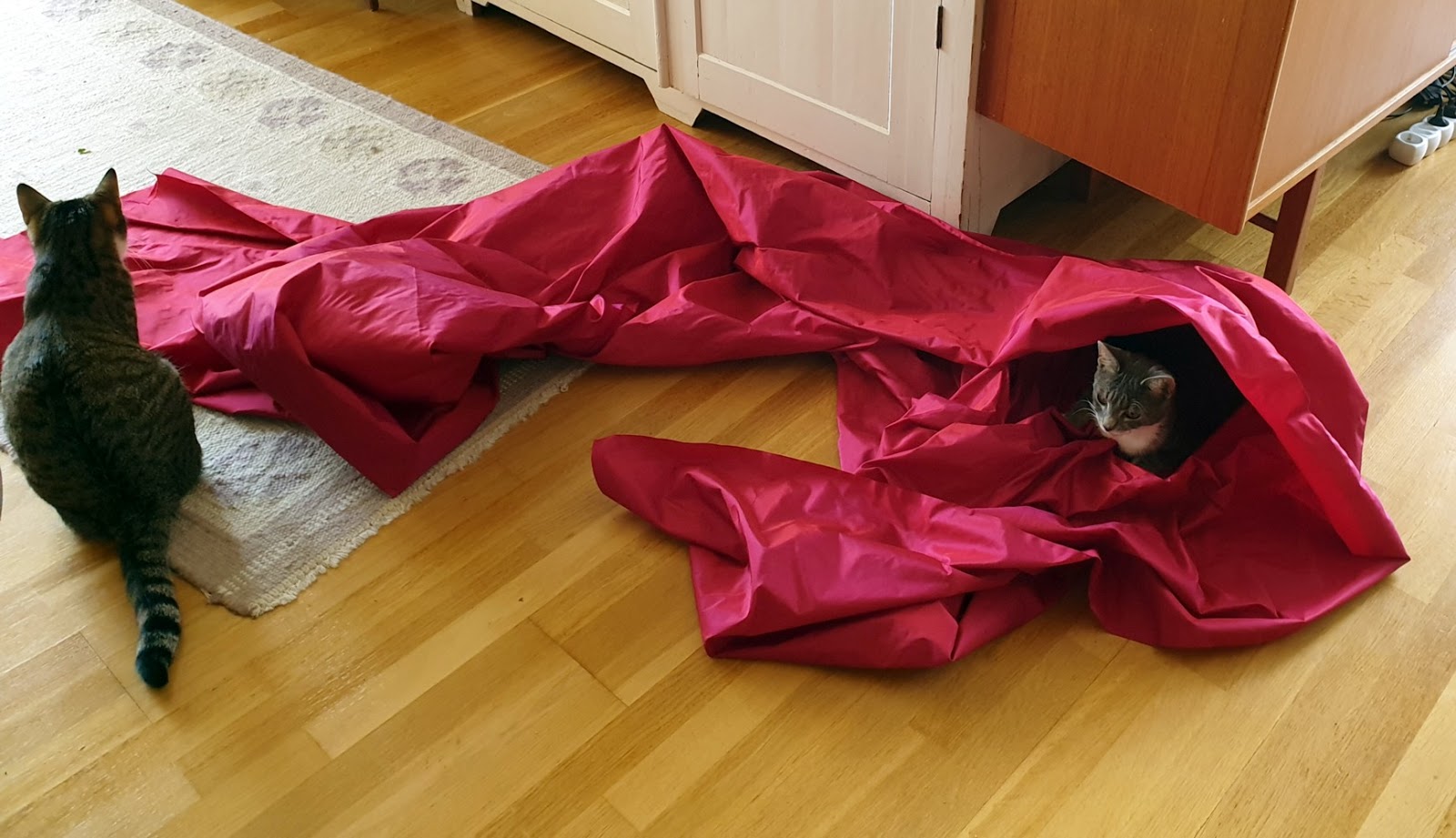A little more than one year ago, when Contessa Isabetta del Verde was queen of Drachenwald, she founded the Society of the Golden Egg. The Society of the Golden Egg is a challenge household for the arts and sciences in the Kingdom of Drachenwald, within the Society for Creative Anachronism.
This is the
web page of the society, which will tell you much more, including ongoing projects. Members of the household are either in the process of making their challenge or have finished their challenges, after which you remain a member of the household for three years. After that you will have to make another challenge if you want to stay.
There are currently eight challengers, and I am one of them.
I liked the idea of the society from the start, but since I research and make stuff all the time I wasn't sure if I needed this/it was for me. Especially since even the largest projects, such as
Valeria's Eleonora di Toldeo gown, tend to be finished much quicker than in a year.
But then I found this, which if we take into account the fact that I have started working 75 % instead of 50 % probably will take a year - at least if I include research, blogging about it and making an article. It really is the perfect project for me:
A quilted auqueton from 13th century France
A Golden Egg challenge by Aleydis van Vilvoorde
The project is to research and recreate the auqueton of St.Isabelle of France, the sister of St. Louis, who lived 1224-1270. While St. Isabelle did become a saint the garment in question is not a religious habit, but a secular garment worn for warmth, and a rather fashionable one too, since quilted garments had recently become popular under the influence of muslim manners of dress. The garment has its name from the Arabic al coton. While fashionable it was not only a high-status garment; quilted garments made from linen or half cotton/linen and with cotton wadding were made as ready-to-wear, at least in Italy, in the period and since the materials were relatively cheap (and labour very cheap in the Middle Ages), they were actually a cheaper alternative to wool garments to keep warm.
When making it I will be using the correct materials and with period sewing techniques but make the garment in a size that fits me. The aqueton will also act as the focus for wider research on quilted non-military garments in medieval Europe. Included in the challenge is that I will blog about the research, tests and finished results. I will also write at least one article on the subject for
Dragon’s tale and present the finished aqueton and the research on a web page at my blog.
The project is a challenge in several ways: I have never quilted a garment before, so I will learn new skills. Patterning for a quilted fabric will be an interesting challenge which will mean making samplers to see how much the fabric shrinks from being quilted. it will also be a challenge to make all that hand quilting in less than a year. My goal is to finish the challenge so that I can present it at Double Wars 2019.
To sum it up why it is perfect for me:
• It is from one of the time periods I mainly make and wear.
• It’s a preserved garment
• It involves the new fashions for quilted clothing, and cotton, which is something I am very
interested in researching further.
• It will provide opportunity to continue my research in the field of cotton and quilted clothing of
the high Middle Ages.
• It is rarely done, the reconstruction of Sihame Cornetet linked to below, being the only example
that I have found.
• It will be a challenge to make all that hand quilting in less than a year, and I need something to
push me.
• It is a practical garment to keep warm. Though wool I does this admirably, so this is the least
concern.
I have started on the research: The garment is one of those included in the recent book by Elizabeth Coatsworth and Gale R. Owen-Crocker: Clothing the past: surviving garments from early medieval to early modern western Europe. I have also studied Sihame Cornetet's
analysis from her blog. There you find many interesting photos and information, and she has also has begun a reconstruction.
Apart from reading my first step was to make a test quilt, to see how much the fabric would shrink from quilting.
Yesterday, during the sewigng meeting that I host for the barony of Gotvik every other week I took some linen scraps of the approximate weight that I am going to use and I measured and marked a rectangle on it.

The cotton batting is spread very thinly, just like the original. When I make the actual pieces I will probably comb it to make it a little more even though.
I then quilted it with waxed linen thread, using running stitches. The finished piece is still flexible, due to the thinness of the cotton wadding, and it didn't shrink noticably.

The next step is finding if there are any older publications in French about this garment and if possible hunt them down. Actually starting on the quilting will have to wait until next salary, because I have bought quite enough fabric this month already.
So instead I cut out and started on the short sleeved linen shift that I mentioned in my precious post.
The other challenges include cooking, brewing, clothing reconstruction, spinning and weaving and lace making - you can read about them
here.














































